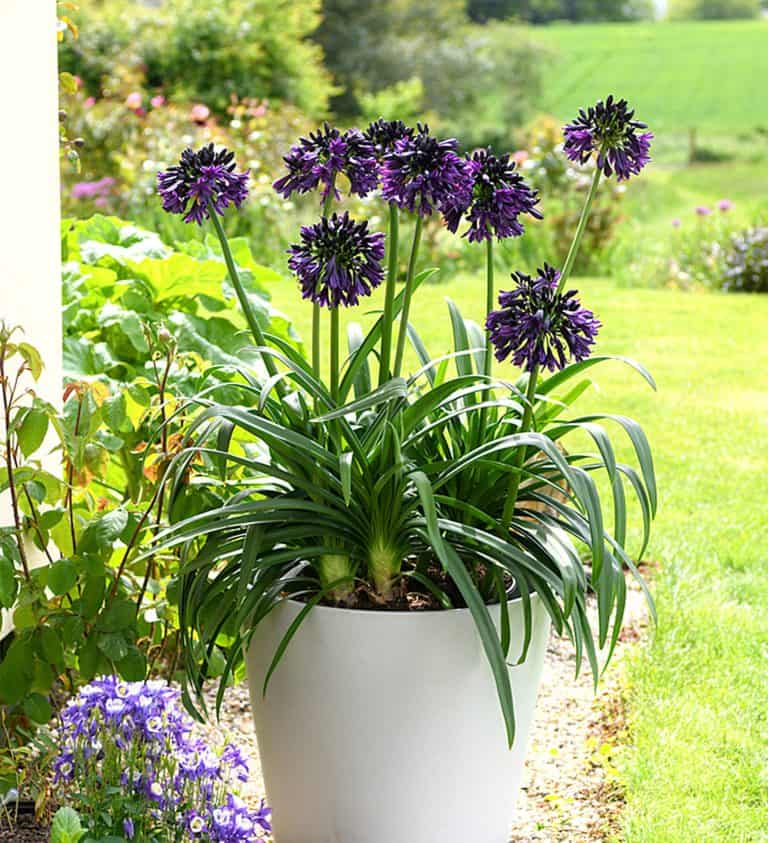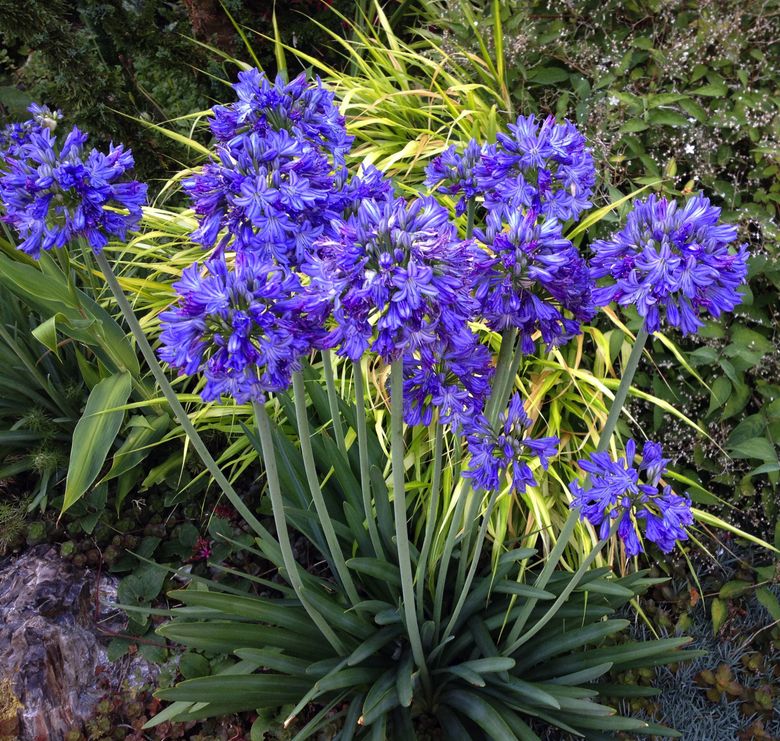Typical Agapanthus Troubles and How to Fix Them
Typical Agapanthus Troubles and How to Fix Them
Blog Article
Unleashing the Secret to Effective Agapanthus Cultivation: Advice for a Flourishing Garden
In the realm of horticulture, growing agapanthus effectively needs a strategic approach that encompasses different elements of plant care. By comprehending the subtleties of agapanthus farming, one can produce an atmosphere where these plants thrive and bloom abundantly.
Growing Agapanthus: Ideal Practices
When planting Agapanthus, correct soil prep work is important for guaranteeing effective growth and advancement of these gorgeous flowers. Agapanthus, typically understood as Lily of the Nile or African lily, flourishes in well-draining soil with a somewhat acidic to neutral pH degree - Agapanthus. Before growing, it is vital to amend heavy clay soils with raw material such as compost or peat moss to boost drain and supply essential nutrients for the plants
To grow Agapanthus, select a place that receives full sunlight to partial shade, as this will promote healthy and balanced growth and plentiful blooming. Dig a hole two times the size of the plant's origin round and position the Agapanthus at the very same deepness it was formerly growing. Carefully backfill the hole with dirt, pushing down strongly to get rid of any air pockets around the origins.
Water the recently grown Agapanthus completely and continue to keep the soil equally damp, specifically during the plant's active expanding period. Agapanthus. Applying a balanced fertilizer once a month can further sustain the plant's growth and blooming. By complying with these ideal practices for planting Agapanthus, you can develop a magnificent screen of these captivating blossoms in your yard
Suitable Dirt Conditions for Agapanthus
For optimum development and growing success of Agapanthus plants, ensuring the dirt conditions are excellent is critical. Agapanthus thrives in well-draining dirt with a somewhat acidic to neutral pH level ranging from 6.0 to 7.0. This kind of soil permits sufficient water drainage, avoiding waterlogging which can lead to root rot. To boost dirt water drainage, think about adding natural issue such as garden compost or peat moss when preparing the growing site. Additionally, Agapanthus chooses dirt that is rich in nutrients, so including a well balanced plant food throughout the expanding period can promote healthy growth and lively blooms.

Watering and Fertilizing Tips
To ensure healthy and balanced development and dynamic blossoms, correct watering and feeding strategies are crucial for effective Agapanthus farming. Agapanthus plants gain from normal watering, specifically throughout the growing period. It is recommended to water deeply when a week, making sure the dirt is wet yet not soaked. During warm weather or in pots, even more regular watering might be essential to avoid the dirt from drying completely.
When it pertains to feeding Agapanthus, a balanced plant food with equivalent components nitrogen, phosphorus, and potassium can be used in the springtime to advertise healthy and balanced growth and blooming. Slow-release fertilizers look at these guys are excellent for giving nutrients gradually over an extended period. Stay clear of over-fertilizing, as this can lead to excessive foliage growth at the cost of blossoms.
In addition, including organic issue like garden compost into the soil can improve read this article nutrient levels and enhance soil framework, helping in the overall wellness of the Agapanthus plants. By adhering to these watering and fertilizing suggestions, gardeners can ensure their Agapanthus plants flourish and create sensational displays of blossoms.
Pruning and Deadheading Strategies
Appropriate pruning and deadheading strategies play a critical role in preserving the health and aesthetics of Agapanthus plants, enhancing the essential practices of watering and feeding for successful farming. Pruning Agapanthus involves eliminating invested blossom heads, yellowing or dead fallen leaves, and overall shaping of the plant to advertise better growth. Deadheading, the process of removing faded flowers, not just boosts the plant's appearance however additionally encourages further flowering.
When deadheading Agapanthus, it is a good idea to snip off the flower stem at the base utilizing sharp, clean shears. This process reroutes the plant's energy from seed production back into root and vegetation development, advertising a healthier and a lot more durable plant. Regular deadheading can extend the blooming period of Agapanthus and avoid self-seeding, which can lead to overcrowding.
In regards to trimming, Agapanthus generally gain from a light trim after blossoming to clean up the plant and encourage fresh development. Reducing the spent blossom stems and getting rid of any kind of dead or damaged vegetation aids maintain the plant's vigor and overall appearance. Nonetheless, it is important to avoid see this page cutting into the crown of the plant, as this can damage its health and wellness.

Protecting Agapanthus From Pests and Diseases
Implementing efficient parasite and condition administration strategies is crucial to guarding the health and wellness and vitality of Agapanthus plants in farming. Agapanthus are usually durable plants, however they can still succumb numerous parasites and conditions otherwise properly looked after. One common parasite that affects Agapanthus is the Agapanthus borer, a caterpillar that passages into the plant, triggering damages to the flowers and fallen leaves. To avoid invasions, routine assessment of the plants is essential. If borers are spotted, they can be manually gotten rid of, or insecticidal soap can be made use of as a control action.
In addition to parasites, Agapanthus are vulnerable to conditions such as root rot and fungal fallen leave areas. These problems can frequently be prevented by making certain correct drainage and preventing overwatering. Impacted parts of the plant need to be immediately eliminated to avoid further spread if signs of condition show up. Fungicides may additionally be utilized as a therapy action, adhering to the manufacturer's directions meticulously. By remaining alert and addressing pest and illness concerns immediately, garden enthusiasts can aid their Agapanthus grow and thrive.

Final Thought
In final thought, successful farming of agapanthus calls for correct growing methods, optimal soil problems, adequate watering and fertilizing, regular pruning and deadheading, and security from illness and insects. By following these tips and methods, garden enthusiasts can ensure a prospering yard filled up with lovely agapanthus blossoms. Agapanthus. Bear in mind to keep consistent treatment and interest to detail to promote the wellness and durability of these spectacular plants
When planting Agapanthus, appropriate dirt preparation is important for making certain effective growth and development of these lovely flowers.Water the freshly planted Agapanthus extensively and proceed to maintain the soil uniformly wet, particularly throughout the plant's energetic expanding season.For optimum growth and growing success of Agapanthus plants, guaranteeing the soil conditions are perfect is essential. When hair transplanting or planting Agapanthus, ensure the dirt is well-prepared to provide the needed structure for the plants to develop themselves efficiently. One typical parasite that affects Agapanthus is the Agapanthus borer, a caterpillar that tunnels right into the plant, triggering damages to the flowers and fallen leaves.
Report this page